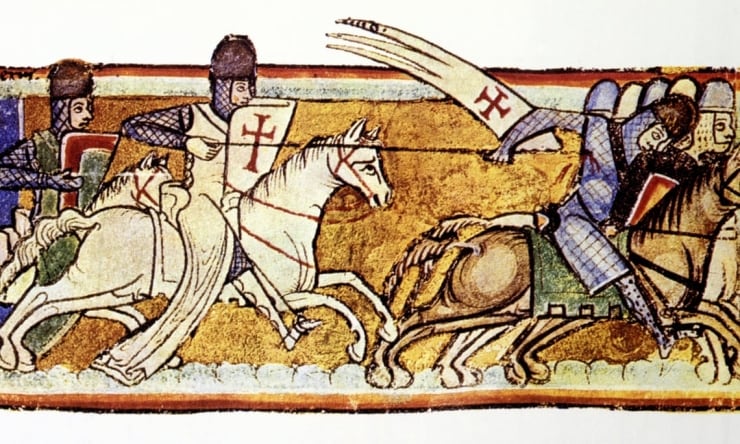13-tého pátek  Velice zajímavá Komenda byla na východním okraji Prahy
Velice zajímavá Komenda byla na východním okraji Prahy 
22.3. 1312 The end of the Templar Order
Categories: Years of war and revolution , Calendar

During their existence, the Templars became excellent bankers and knights of great influence. Their power and wealth angered the monarchs, which also led to the dissolution of the Order on 22 March 1312.
One of the main "enemies" of the Templar Order was the French King Philip IV. He claimed that the Order refused to contribute to his war expenses, but this was probably just a pretext. In addition, there was much mystery and conjecture surrounding the Templars, which was also not to the liking of many. This eventually led to the Templars being accused of heresy. The French king eventually forced Pope Clement V to excommunicate the order. The abolition took place at the Council of Vienne on March 22, 1312.
"The result was an interesting compromise. At the Council, Pope Clement V did officially abolish the Templar Order, but he did not assign its property to the king, but to the Johannites. The greedy king, however, had them pay the costs of the trial of the Templars, which he quantified so that the Johannites became his debtors," writes Jan A. Novák in his book Templars, Masons and Other Secret Societies in Bohemia and the World.
During the trial of the Templars, Clement V took several unexpected steps. Apparently it was a kind of collaboration with the nobleman Jacques de Molay. who was the last Grand Master of the Templar Order. It's said that the purpose of the various diversions was to divert attention and buy time to cover their tracks.
"That the Pope's role in the Templar cause was not nearly as clearly villainous as mostother tradition, is evidenced by a document known as the Chinon parchment, which was only discovered in 2001 in the Vatican archives by Italian historian Barbara Frale. It is dated August 1308 and essentially exonerates Molay and his companions of the charges of heresy leveled by the Philip-dominated Inquisition," Novak writes further in his book.
None of the Templars in what is now Germany, Austria or Bohemia were executed. "After the dissolution of the order, their property was of course taken from them. It is not known exactly what happened to the Templar property in Moravia. The main seat of the Order, Čejkovice, was the centre of the Templars for the Austrians and for the Order's castle Templštejn. It is not known what happened to them, however, King John of Luxembourg intervened there at that time with an army against the marauding nobility. It is therefore possible that it was the Moravian nobility who illegally seized the Templar property," says Richard Händl in his book Grey Eminences in Czech History.
In the end, the French king did better. He was to be paid about 200,000 livres from the Order's property.
Sources. Novák: Templars, Masons and Other Secret Societies in Bohemia and the World
Richard Händl: Grey Eminences in Czech History
www.theguardian.com
The article is included in categories:
Post
Přestože většina prelátů shromážděných na koncilu ve Vienne, který měl rozhodnout o osudu řádu, se zrušením templářů nesouhlasila, byl zrušen papežskou bulou Vox in Excelso datovanou 22. března. Rozhodnutí o zrušení bylo zveřejněno 2. dubna 1312
Víra, politika, prachy, moc... Svinstvo od počátku věků 
Děkuji za článek.









